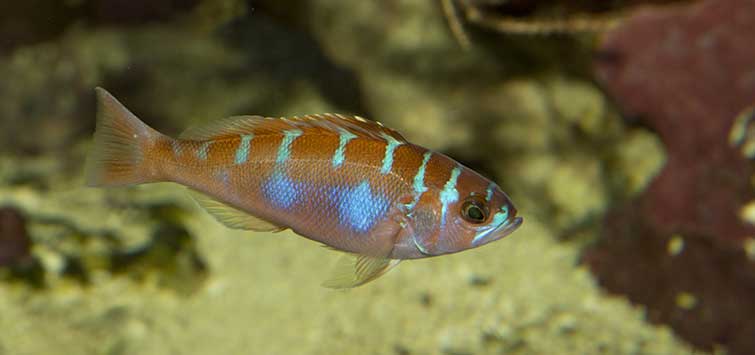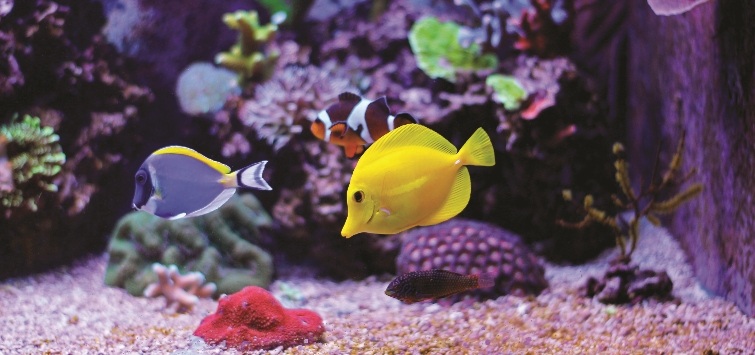Beyond Damsels: Best Saltwater Fish for Beginners
Author: Mark Denaro
In the early days of marine aquarium keeping, the idea that damsels were the best saltwater fish for beginners became firmly entrenched in the minds of hobbyists. Somehow, we’ve never really taken the time to consider the logic of this idea, or to weigh the positive and negative consequences of the practice.
On the positive side, damsels are colorful, inexpensive, and exceptionally hardy. On the negative side, they are territorial and aggressive, and many species that are colorful and attractively patterned as juveniles turn into unattractive terrors as they age.
At their worst, they will attack every new fish added to the aquarium, regardless of the size of the new addition. Particularly in smaller aquariums, their aggression can cause big problems. Clearly, the negatives of using damsels as starter fish outweigh the positives. But what alternatives do we have? Fortunately, there are many.
One of the biggest changes since the early days of “add some damsels” is the advent of available captive-bred fish. We’ve entered the golden era of marine aquariums where we’re in the process of converting the hobby from the keeping of wild-caught fish to the keeping of primarily captive-bred fish. This is a good thing for the hobby, and for the planet.
As the range of commercially bred species broadens, more and more fish will be suitable for inclusion in new aquariums. These commercially bred fish are much more hardy than their wild cousins, and many of them make excellent choices for good starter fish.
Clownfish
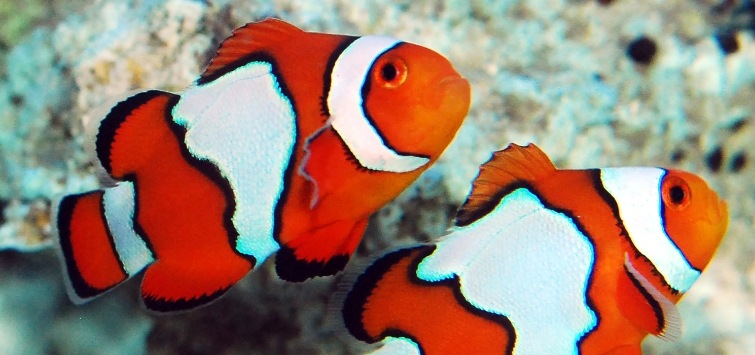
The best-known captive-bred fish are the clownfishes, an iconic group of fish in the aquarium hobby. And while I would not recommend wild-caught clownfish as starter fish, there is an incredible range of captive-bred clownfish, including fish that look like their wild counterparts, as well fish with patterns that are only rarely encountered in the wild.
Members of the damselfish family, captive-bred clownfish are exceptionally hardy and adaptable fish. They are significantly more disease-resistant than their wild cousins and make fantastic choices for first fish.
The big question here is how many to add. The simple answer is two. With clownfish, any two young fish will likely mature into a pair, with the dominant individual becoming female, and the less dominant remaining male. In the small confines of an aquarium, especially the smaller aquaria so prevalent among new hobbyists, it is likely that a pair will kill any other clownfish, so adding a group is not a good idea.
A quick note on sex determination in clownfish might be called for here: All clownfish are born male, and in any group, the dominant fish will become a female. Only the dominant male breeds with the female, with the others being non-functional males. Remove the female, and the male becomes a female, and the most dominant juvenile becomes the breeding male. Remove the breeding male, and the most dominant juvenile becomes a breeding male, and mates with the female. But once a clownfish becomes a female, it is a female for life; introducing two large adults (females) to an aquarium will often result in constant fighting.
Which type of clownfish should you get? Whatever you like, as long as it’s a species that won’t outgrow your aquarium. Most popular by far are the color variants of Amphiprion ocellaris. But don’t limit yourself—you can even choose two different color variants, as the fish themselves don’t seem to care, and fish with very different patterns can still become a bonded pair. Just be sure to stick to a single species, as clowns of different species often fight.
Enjoying TFH Magazine? Subscribe Today!
Gobies, Gobies & More Gobies!
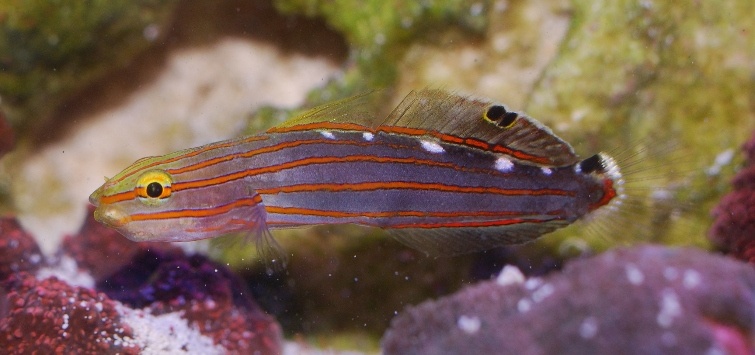
A number of companies also offer a range of captive-bred gobies, which are also among the best saltwater fish for beginners. One of the first fish to be bred in commercial quantities were the neon gobies of the genus Elacatinus. Several species are available, as are several hybrids; I’m not a fan of hybridizing fish in captivity under any circumstances, but if you like them, they are readily available.
The red-head goby is an excellent choice from the group. The only caveat with neon gobies, and other smaller goby species, is to make sure any that you purchase are too large to go over any built-in overflows in your aquarium.
Also look for tiger gobies, members of the genus Tigrigobius, most commonly the green banded goby (T. multifasciatus) and the tiger goby (T. macrodon). These fish are every bit as hardy as the neon gobies. You’ll sometimes see the masked goby (Coryphopterus personatus) available as well, and it’s another excellent choice.
These species are all much more hardy when captive bred, and, as with the clowns, I would only suggest captive-bred specimens as starter fish.
Some of the larger watchman gobies of the genus Cryptocentrus can be found as captive-bred stock, but they are much more commonly available as wild-caught specimens. These include the yellow watchman goby, which is probably the best starter fish of the genus, whether wild or captive bred. Other good options include the banded watchman, blue fin watchman, and the lagoon watchman.
Watchman gobies all live symbiotically with pistol shrimp. I’ve only seen wild-caught pistol shrimp available up to this point. While the gobies will do well in an aquarium without shrimp, their behavior is much more interesting when shrimp are present. The shrimp builds a burrow and the watchman goby stands watch to be sure that predators don’t come along to eat the shrimp. The shrimp keeps an antenna against the goby almost all the time, so that it can feel movement from the goby and know when danger is present.
While this is fascinating to watch, the shrimp should not be added to a new aquarium. Wait a few months to be sure the tank is stable before adding the shrimp.
Bar gobies (Ptereleotris zebra) and other torpedo gobies of the genus Ptereleotris are another excellent group of saltwater fish for beginners. In my experience, the bar goby is probably the hardiest fish in the hobby. I’ve seen them survive otherwise total tank wipeouts. They’re also flat-out beautiful fish, whose color pattern will appear to change as they move and the light reflects off their sides at different angles.
Bar gobies are schooling fish that can grow to over 4 inches (10 cm), so they’re not suitable for the nano or small aquarium. They prefer to be kept in a group, but can be kept individually. Unfortunately, this species is not as regularly available as it was decades ago, and the price has risen dramatically. Once sold at the same price as the most common damselfish, they now command prices that are roughly triple that of a common damsel.
This is one of the most peaceful marine fish I’ve ever kept. There might be a minor dominance hierarchy within a group, but I’ve never seen them bother other species—unless they are small enough to fit in their mouths, in which case they will be eaten. The scissortail goby is a more subtly colored fish that is similar in all respects, and also worthy of inclusion in new tanks.
Fang Blennies
There are a number of blennies available in the hobby that can also be great saltwater aquarium fish for beginners. The most commonly bred species in captivity are fang blennies of the genus Meiacanthus. These free-swimming blennies like to cruise in the water column rather than living a benthic existence like most other blennies.
Any species that is captive bred is a good starter fish, but when it comes to wild-caught fish, the only one I would suggest is the zebra blenny.
Fang blennies are shoaling fish that prefer to be kept in groups, but they can be maintained as individuals. The species that seem to do best as a single fish are the zebra blenny, Bundoon blenny, and the Kamohara blenny.
Fang blennies possess a venom gland that allows them to bite a potential predator and inject venom via two curved lower teeth, hence the common name. They are peaceful in the aquarium, but groups should only be maintained in larger aquariums.
Banggai Cardinalfish
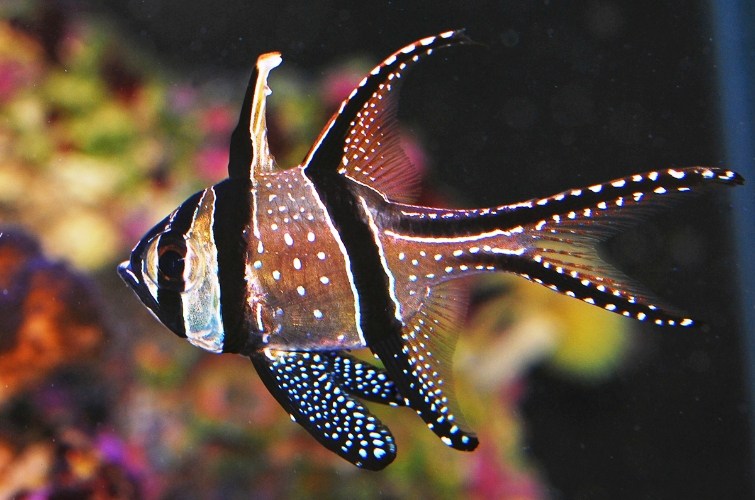
Banggai cardinals are wonderful aquarium fish. While they don’t feature gaudy colors, they more than make up for it with their pattern of spots and stripes and great fins. Banggai cardinalfish are easily bred in captivity, and wild-caught fish should never be purchased due to their limited habitat and consequent population vulnerability if they are overcollected for the aquarium trade.
While some shops may still carry wild Banggai cardinal specimens, every shop has access to captive-bred stock. The captive-bred fish tend to arrive at a slightly smaller size, but are typically about the same price as wild fish. They are definitely hardier and handle the rigors of shipping better than their wild counterparts.
While Banggais will spend much of their time out in the open, where they like to hang in the water column, it is best to provide them with an overhang where they can congregate if the bright lighting of a reef aquarium becomes too much.
They are paternal mouthbrooders, and the young emerge from the male’s mouth looking like really cute, tiny replicas of their parents. The young in particular like to hide among the spines of long-spined sea urchins.
Royal Gramma
My all-time favorite marine fish is the royal gramma. This beautiful fish is one of the easiest saltwater aquarium fish for beginners to maintain. They can be kept individually or in a group, but if maintaining them in a group, be sure to add them all together. All fish should be about the same size, or one much larger than the others. This will typically result in one male with a group of females.
In nature, royal grammas spend their time in haremic groups in overhangs and caves, where they keep their stomachs oriented to the ceiling or walls. Places where they can do this should be provided in the aquarium, but they will spend more and more of their time out in the open as they adjust to aquarium life.
I always enjoy watching them defend territories or trying to impose their will on other fish. They will open their mouths in a threat display, but will usually turn and flee at the first sign of aggression from other species.
Royal grammas are occasionally available as captive-bred specimens, and these should always be preferred over wild-caught individuals, though my experience has always been with wild fish.
Ditch the Damsels!
If you’re planning on setting up a marine aquarium, those damsels will only distress you, so consider other options when you begin stocking it. No matter the size of the aquarium, there are plenty of options, and the ones we’ve discussed here are only a starting point, so don’t be limited by my list.
No matter your stocking choices, be sure to research the needs and hardiness of any fish you’re considering prior to purchase. It’s better for you and the fish if you plan to meet its requirements ahead of time rather than having to make changes to your setup to accommodate it correctly. That planning ahead part is the hallmark of an aquarist who will be successful in the saltwater hobby.

.png?h=595&iar=0&w=2781&hash=5FD5E69473BCC22199FBFA2FB71B6033)


